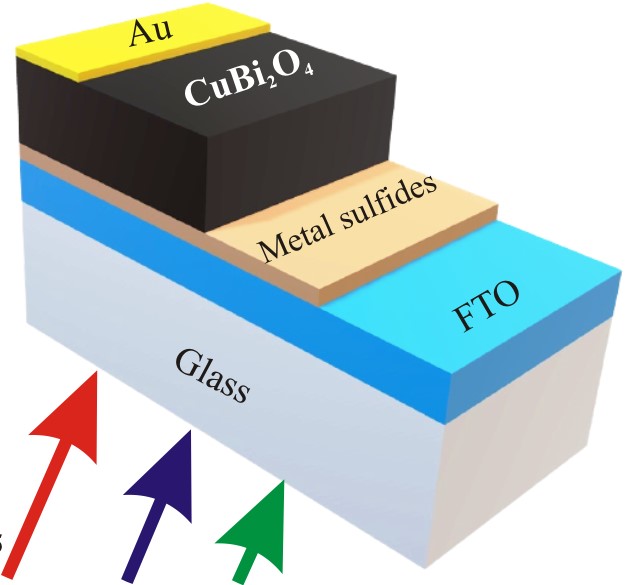From pv magazine Global
Scientists from the Indian Institute of Technology Indore have proposed a new way to fabricate thin-film solar cells based on kusachiite (CuBi2O4), an extremely rare binary copper(II) and bismuth(III) oxide that was recently discovered in Okayama prefecture, Japan.
“There are two previous reports on using kusachiite as a light harvester,” researcher Vishesh Manjunath told pv magazine. “In the first report, CuBi2O4 is sensitized over photoanodes to fabricate dye-sensitized solar cells, and the in the second report, CuBi2O4 light harvester is modeled with a complex device architecture. However, for the first time, we have modeled the kusachiite solar cells akin to the simpler perovskite solar cell device architecture.”
He said the cost of kusachiite solar cells could be much lower than that of conventional crystalline silicon cells, owing to the well-established synthesis protocols of CuBi2O4.
“The synthesis of various nanostructures of CuBi2O4 is well-established,” he said. “However, synthesizing thin films of CuBi2O4 with low defect density should be experimented with, and the best and most cost-effective process can be scaled up for manufacturing kusachiite solar cells.”
The researchers designed the cell with a substrate made of fluorine-doped tin oxide (FTO) glass, different types of buffer layers, a CuBi2O4 absorber, and a metal contact based on gold (Au). Through a series of simulations, they evaluated this design for variation in thickness, accepter/donor defect, and doping density of subsequent thin-films, counter electrodes, and operating temperature.
“An increase in the thickness of CBO absorber film beyond the charge diffusion length will lead to charge recombination resulting in low short-circuit current density (JSC), subsequently restraining the power conversion efficiency,” the scientists explained. “Importantly, the CuBi2O4 thin films deposited by spin-coating and pulsed laser deposition (PLD) showed a carrier diffusion length of around 50 nm. Moreover, the thickness of the absorber layer controls the carrier absorption of short-wavelength photons and considerably reduces the electrical losses associated with charge carrier recombination at the interface.”
In the proposed cell configuration, blue light and other high-energy light are absorbed at the interface, while low-energy light like red light is absorbed when the thickness of the absorber is on the higher side. For this reason, the thickness of CuBi2O4 absorber films should be properly optimized to achieve maximum efficiency, said the research group.
They found that the highest efficiency of 27.7% was achieved with a cell design featuring a buffer layer made of tin sulfide (SnS2). Another device with a tungsten disulfide (WS2) buffer layer – as well as an optimized CuBi2O4 light absorber with a thickness of 900 nm and an acceptor doping density of 2 cm × 1,018 cm – achieved an efficiency of 22.84%.
The scientists presented the solar cell design in “Futuristic kusachiite solar cells of CuBi2O4 absorber and metal sulfide buffer Layers: Theoretical efficiency approaching 28%,” which was recently published in Solar Energy.
“Overall, the methodology and approach provided here to scrutinize environmentally friendly, cost-effective
This content is protected by copyright and may not be reused. If you want to cooperate with us and would like to reuse some of our content, please contact: editors@pv-magazine.com.









By submitting this form you agree to pv magazine using your data for the purposes of publishing your comment.
Your personal data will only be disclosed or otherwise transmitted to third parties for the purposes of spam filtering or if this is necessary for technical maintenance of the website. Any other transfer to third parties will not take place unless this is justified on the basis of applicable data protection regulations or if pv magazine is legally obliged to do so.
You may revoke this consent at any time with effect for the future, in which case your personal data will be deleted immediately. Otherwise, your data will be deleted if pv magazine has processed your request or the purpose of data storage is fulfilled.
Further information on data privacy can be found in our Data Protection Policy.